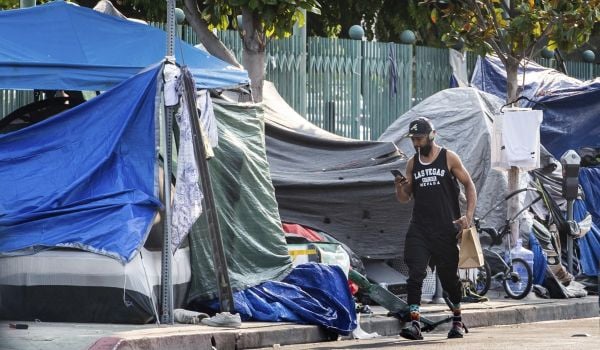Back in April, Daniel Brook brought you a Forefront story chronicling the saga of Tony Hsieh, CEO of the online shoe retailer Zappos, and his wish to revitalize Downtown Las Vegas by relocating his company’s headquarters from Henderson, Nev. to the middle of Sin City.
It’s a fascinating story in which real estate, economic development and corporate willpower intersect. But the move isn’t sitting so well with some of Hsieh’s employees.
Earlier this month, the Las Vegas Sun reported that not all Zappos worker bees feel entirely comfortable navigating the urban wilds outside their new digs. Confronted with Downtown’s appreciable homeless population, several employees have raised concerns about their safety outside the renovated old City Hall that now serves as the company’s main office. (Not everyone feels this way, mind you — a former Angelino brags that some of the things she saw in L.A. make Vegas look “like nothing.”)
Per the Sun:
But not everyone at Zappos has lived or worked in an urban core previously. And some of those now working in the Carson Avenue office are feeling a bit uneasy. The Sun received an email from someone claiming to be a Zappos employee — her identity was unknown — who said safety and office amenities are becoming an issue to some who work in the new office.
Zappos has adopted a few policies meant to put the underlings at ease. Some, like hiring more security guards for a parking garage, seem commonsensical enough. But others fly in the face of the very reasons Hsieh moved Downtown in the first place.
For instance, hiring a shuttle to service escort employees a from that parking garage to the Zappos office — a distance of only four blocks — recalls the skyways that connect commercial buildings to parking structures in many U.S. downtowns, assuring that commuters never have to step foot on the street. Not coincidentally, these skyways appear in many cities whose downtowns have struggled since city planners began catering chiefly to suburban car commuters.
Vegas makes another appearance in this week’s Forefront story, about a potential highway project that could link the city with Phoenix, Ariz. to turn the region into a megapolitan cluster (that’s a group of neighboring metros with linked economies and more than 10 million combined residents). To some, a project as seemingly anachronistic as a brand new interstate highway is a harbinger for more unsustainable growth on the urban fringe — the standard for both Vegas and Phoenix since they ballooned in the mid-20th century.
But however the region goes about positioning itself as a megapolis with global clout, a company like Zappos can add some balance by pioneering economic activity in the urban core. But that will never happen if the company’s 1,200-some employees don’t spend any time on the street.
Las Vegas’ planning director understands that getting more people on the Downtown streets will increase surveillance and make everyone feel safer, and tells the Sun as much. Does the Zappos leadership grasp this concept as well? If the company wants to single-handedly spur development in a long-divested area, buffering its workforce from the streets, like so many sheltered children, won’t hurry matters along. Instead, it will likely hinder Hsieh’s vision from becoming reality.
















